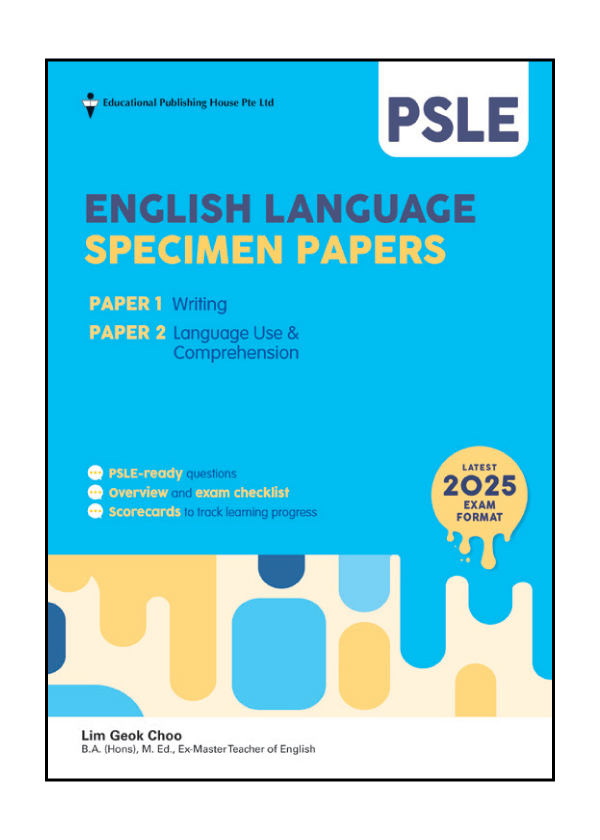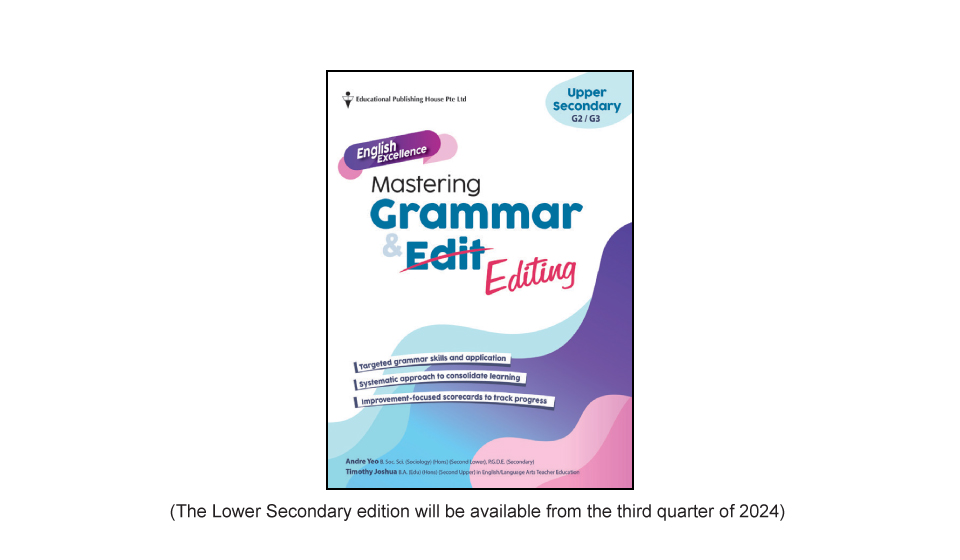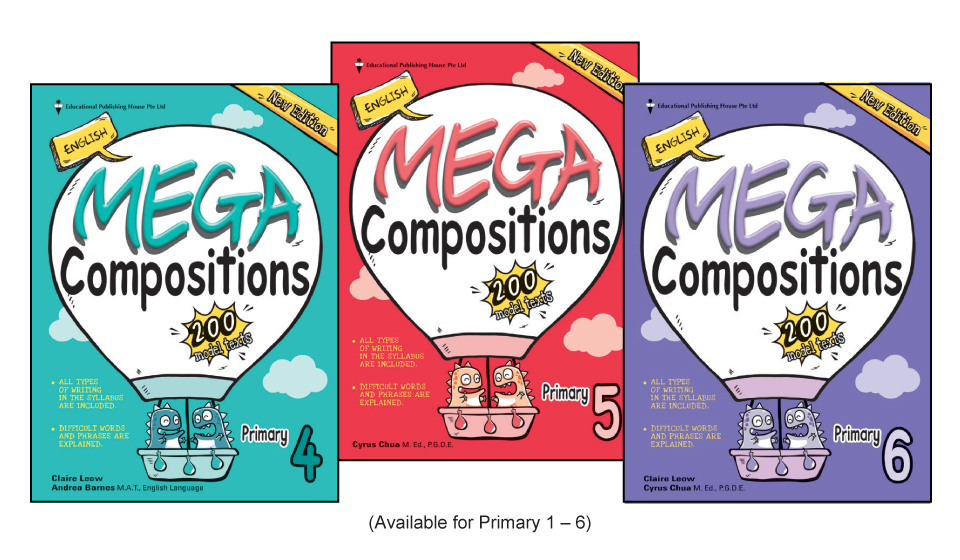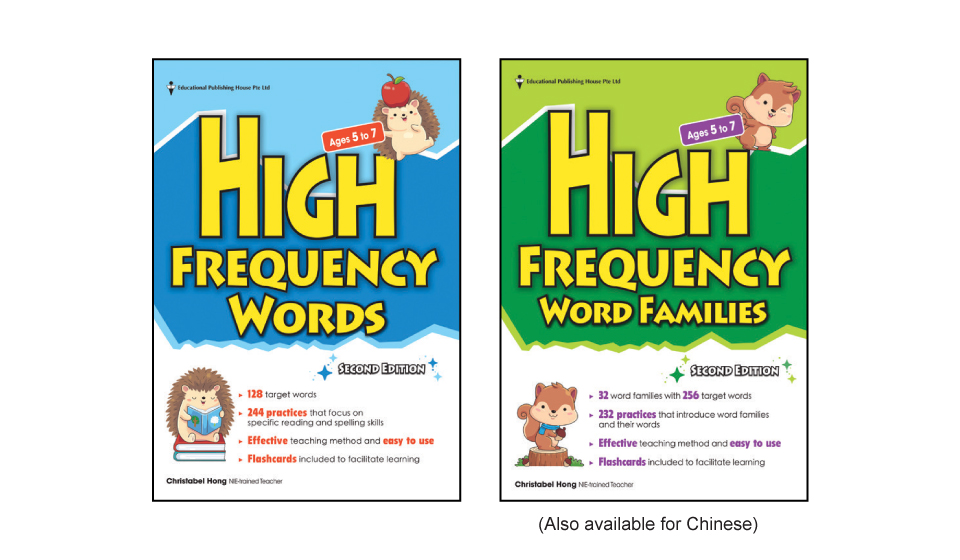About Us
Members Enjoy 10% Off Storewide – Sign In to Save Instantly!




Nov 2024

Do you know about the changes to two examinable components in the 2025 English PSLE Papers 1 and 2?
Nov 2024 | By EPH Editorial Team
As the 2025 English PSLE approaches, pupils will face significant changes in both Paper 1 (Writing) and Paper 2 (Language Use and Comprehension), which carry a weightage of 25% and 45% respectively. Becoming proficient in tackling the new question formats is crucial to scoring well, so let's unpack the key changes.
Situational Writing
This component of Paper 1 requires pupils to write a short piece based on a pictorial stimulus. This can be in the form of a letter, email, report, or even an article. To score well, pupils have to identify the purpose, audience, and context (PAC) of the given scenario and address the task’s requirements, outlined in the bullet points, with the necessary information.
New Format The 2025 examination format introduces a heightened focus on a newly added underlined stimulus question. Pupils are expected to generate their own personal responses to the underlined bullet point. This question type tests critical thinking, as it requires pupils to come up with a possible course of action, describe their feelings towards a scenario, or even think of a reason why a certain event occurred.
Visual Text Comprehension
This component of Paper 2 tests pupils’ ability to extract and interpret information from the given visual text. A visual text combines images and words to convey information.
New Format The 2025 examination format will feature two texts, which are thematically related. With the introduction of an additional text, it places an emphasis on pupils’ ability to draw connections between texts. Identifying common themes and recognising the differences between the texts are essential for performing well in this component.
To help pupils navigate these changes, PSLE English be sure to check out Language Specimen Papers: Paper 1 & Paper 2 ($14.90) from Educational Publishing House (EPH). Aligned with the 2025 PSLE format, the book provides exam-simulated practice to pupils. The book also includes a comprehensive scorecard for pupils to identify their strengths and weaknesses. Complete with an overview and exam checklist for each tested component, EPH’s newest set of specimen papers ensures that pupils are fully prepared to tackle the examinations.
May 2024

The backbone of effective English communication is grammar.
May 2024 | By Andre Yeo, Timothy Joshua & EPH Editorial Team
Having a strong grasp of grammar enables you to express yourself clearly, write proficiently, comprehend texts, and speak confidently. Likewise, to be able to edit effectively, a sound knowledge of grammar is essential. Authors Andre Yeo and Timothy Joshua share their thoughts on their new Secondary English series, English Excellence: Mastering Grammar & Editing ($13.90), and how it aids students in their mastery of the English language.
Q How has your experience as Secondary English teachers shaped the development of this series?
From our experience, there is usually a lack of explicit grammar skills taught in secondary school due to the assumption that students are taught these skills in primary school. The majority of students thus tend to make grammar mistakes by simply going with their ‘gut’ feeling of what feels ‘right’, which we are here to help correct!
Q Could you highlight the unique approach of this series in engaging students to grasp grammar concepts effectively?
The series has a dual approach of offering explicit grammar instructions with practice, and in-depth explanations for each error for cross-checking and self-improvement. With the rigorous chapter-specific and overarching editing practices of increasing complexity, students can gain mastery of each grammar component.
Q What distinguishes this series from other resources?
As veteran teachers, we have always found it frustrating to see unreasonable answers in other editing practices which do little except confuse students. To circumvent this, the English Excellence: Mastering Grammar & Editing series pitches to national examination standards, in terms of fairness, difficulty, and error types. The in-depth explanation of errors also allows students to learn effectively from their mistakes by detailing how to apply grammar rules correctly to various types of questions.
Mar 2024

Getting in the groove of reading a book or penning a story can be as easy as one-two-three.
Mar 2024 | By EPH Editorial Team
In today’s digital age, we do not read and write as much as before because a lot of us spend more time on our mobile devices watching multimedia content and playing games instead. Writing compositions in school can then feel like a chore as we fall out of practice. To reignite and nurture your interest in reading and writing, here are some suggestions.
1 Make Time to Read
Reading and writing go together. Reading sparks your imagination, creativity, and critical and analytical skills, which are the key ingredients to writing. To develop a reading habit, set aside some time to read every day. You can start small. For instance, just 15 minutes a day can be the start of a wonderful habit. Making time to read before bed can help you to relax and sleep better.
2 Read Quality Materials
A good book draws you in and makes it hard for you to stop reading. If you’ve yet to stumble upon a book that you truly like, try expanding your selection of reading materials. Find out what suits your tastes by exploring different genres. Whet your reading appetite by choosing books with interesting settings, plots, or characters. You can also read different text types to expand your vocabulary and pick up various comprehension strategies.
3 Make Time to Write
To improve as a writer, you simply need to keep trying, learning, and writing along the way. An easy way to go about this is to start off by writing about things that interest you or you feel passionate about, like your favourite sport, pop star, or book. You can also keep a journal to pen your innermost thoughts or reflections. Express your true voice by writing and you’ll naturally write more over time.
For more inspiration to get your writing juices flowing, check out the new edition of the English Mega Compositions series ($10.90 each), published by Educational Publishing House (EPH). Each book features an extensive collection of 200 compositions of different text types. This series fosters a love for reading and offers inspiring ideas for your own writing.
Nov 2023

Here’s how to incorporate high-frequency words in your tot’s daily routine to maximise preschool language learning.
Nov 2023 | By EPH Editorial Team
As parents, you hold the key to your child’s early language development. Did you know that introducing high-frequency words — words that appear often in everyday reading and writing — during preschool years can greatly boost your child’s language skills? Here are five effective tips to help you maximise your preschooler’s language learning using high-frequency words.
1 Make Learning Fun
Learning doesn’t have to feel like a chore. Incorporate high-frequency words into games and activities your child already loves. Use flashcards and play ‘I Spy’ using high-frequency words instead of objects. These methods turn learning into a playful adventure, keeping your child engaged and excited.
2 Create a Word-Rich Environment
Surround your child with words! Label everyday items around the house (e.g. mug, pot, mat) using sticky notes or removable tape. When they see these words often, paired with high-frequency words, they’ll start recognising and remembering them naturally.
3 Read Together
Reading is a powerful tool for language development. Choose books that feature high-frequency words and read aloud together. Encourage your child to point at the words as you read them. Repetition is key! The more your child hears and sees these words, the more they’ll understand and use them.
4 Sing and Rhyme
Children love music and rhymes. Incorporate high-frequency words into catchy songs and rhymes. Create your own tunes or find existing ones online. When words are set to music, they become even more memorable. You’ll be amazed at how quickly your child picks up these words through rhythm and melody.
5 Converse Daily
Simple daily conversations provide countless opportunities to introduce high-frequency words. Talk to your child about their day, activities, and surroundings. Use these words naturally in sentences, for instance, “Put on your cap before going outside.” Contextual use helps your child grasp the meaning and usage of these words.
To complement the above, introduce your child to activity books that are both enjoyable and feature effective teaching methods. Adored by parents and teachers alike, the new 2nd edition of the High Frequency Words series ($12.90 each) from Educational Publishing House serves as a reliable companion for your child’s language development. Equipped with ample practices and flashcards, these easy-to-use books will empower your child to become better readers!
Remember, every child learns at their own pace. Celebrate their progress and efforts along the way. By incorporating high-frequency words into their daily routine, you’re building a solid foundation for your child’s language skills as they grow.
Customer Care
Retail Stores
Corporate Sales
About Us
Customer Care
Retail Stores
Members
Corporate Sales
Gift Voucher

© Copyright 2025 Popular Book Company Pte Ltd .197500612M All Rights Reserved.

